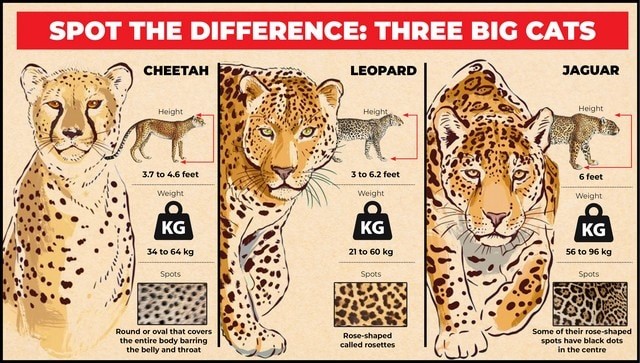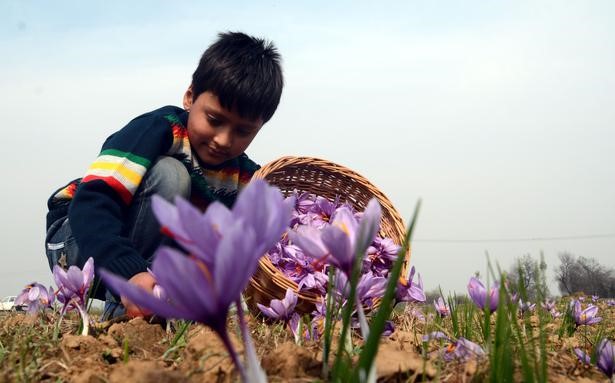National Logistics Policy (GS Paper 3, Infrastructure)

Why in news?
- Recently, the Prime Minister, launched the National Logistics Policy in New Delhi.
Vision:
- The vision of the policy is to develop a technologically enabled, integrated, cost-efficient, resilient, sustainable and trusted logistics ecosystem in the country for accelerated and inclusive growth.
- The policy aspires to reduce cost of logistics in India to be comparable to global benchmarks by 2030, endeavour to be among top 25 countries by 2030 in the Logistics Performance Index ranking, and create data driven decision support mechanism for an efficient logistics ecosystem.
- The Logistics Performance Index was reported by the World Bank every two years from 2010 to 2018.
Why a National Logistics Policy?
- Logistics efficiency is a function of infrastructure, services (digital systems / processes / regulatory framework) and human resource.
- PM GatiShakti National Master Plan (NMP) for multimodal connectivity infrastructure to various economic zones, has been launched.
- While development of integrated infrastructure and network planning is envisaged to be addressed through the PM GatiShakti National Master Plan, for efficiency in services (processes, digital systems, regulatory framework) and human resource, the National Logistics Policy is the logical next step.
- This will provide a comprehensive agenda for development of entire logistics ecosystem.
Implementation:
- The Policy will be implemented through a Comprehensive Logistics Action Plan (CLAP).
The interventions proposed under the CLAP are divided into eight key action areas:
- Integrated Digital Logistics Systems
- Standardisation of physical assets and benchmarking service quality standards
- Logistics Human Resources Development and Capacity Building
- State Engagement
- EXIM (Export-Import) Logistics
- Service Improvement framework
- Sectoral Plan for Efficient Logistics
- Facilitation of Development of Logistics Parks.
Unified Logistics Interface Platform (ULIP):
- The central government will create a Unified Logistics Interface Platform (ULIP) under the National Logistics Policy.
- ULIP will integrate seven ministries, the Ministry of Ports, Shipping and Waterways, the Ministry of Civil Aviation, the Ministry of Road Transport and Highways, the Ministry of Commerce and Industry, the Ministry of Railways, the Ministry of Finance, and the Ministry of Electronics and Information Technology, on one platform to provide logistics companies with information about cargo movement in the country.
- The government will integrate around 17 digital systems from the seven ministries on ULIP.
- Out of the 17 systems till now 12 systems have been integrated under ULIP and only one system each from the Ports and Shipping ministry and one from the Finance Ministry are left to be integrated.
Tasks undertaken by ULIP:
- The government has integrated data from the National Industrial Corridor Development Corporation into ULIP.
- Furthermore, discussions are underway to integrate the Food Safety and Standards Authority of India and Digilocker into ULIP.
- ULIP will be used for inventory management, digitized document generation & exchange, track & trace, grievance redressal, risk-based import clearance, and ease of cargo movement in India, the government said.
- The government will also hire different third-party companies for the development, operation, and maintenance of ULIP.
- The ULI platform will provide logistics companies, importers, and exporters data on their cargo movement across the country and will also help provide cargo movement clearances.
Way Forward:
- It is a transformative approach for improving logistics efficiency and reducing logistics cost, with focus on integrating existing and proposed infrastructure development initiatives of different agencies, to ensure first and last mile connectivity, for seamless movement of people and goods.
Cheetah, Leopard & Jaguar
(GS Paper 3, Environment)
Why in news?
- Eight cheetahs from Namibia were recently released by Prime Minister in the Kuno-Palpur National Park in Madhya Pradesh.
- The reintroduction has put the spotlight on the vulnerable cats, often confused with leopards and jaguars which too have rosettes (spots).
Cheetahs:
- Found mostly in sub-Saharan Africa, where they roam around freely in the savannahs, the African cheetah can measure from 3.3 feet to five feet from the head to the tail. The tail can further add 24 to 32 inches.
- The weight of an adult cheetah varies from 34 kg to 56 kg, with the male cheetah on the heavier side.
- A cheetah’s undercoat has colours ranging from light tan to deep gold and is covered with black round spots.
- Unlike its other spotted cat cousins, cheetahs only hunt early in the morning or late afternoon. Their preys include gazelles, impalas and antelopes.
- Another distinct feature of a cheetah is its tail. They end with a bushy ball of hair which is encircled by five or six dark rings. However, what makes these felines stand out are the two distinctive black stripes that run down from their eyes to the mouth, the tear marks. They act like sunglasses, reflecting glare while hunting.
Asiatic cheetahs:
- The Asiatic cheetahs were found in India but extensive hunting and loss of habitat led to their decline. They were declared extinct in 1952.
- Now, critically endangered, this subspecies is only surviving in Iran.

Leopards:
- A big powerful cat that has no problem hanging out on a tree branch, leopards are closely related to lions, tigers and jaguars.
Habitat:
- Going by the scientific name, Panthera pardus, leopards are often found in sub-Saharan Africa, northeast Africa, Central Asia, India and China. Many of their populations are endangered, especially outside Africa.
- Leopards are the smallest members of the large cat category and can grow to a maximum size of six feet.
- They can adapt to any kind of habitat, be it rainforests, deserts, woodlands, grassland savannas, forests or mountain habitats.
Features:
- The wild cats spend a lot of their time on trees. Their spots camouflage with the foliage, making it easier for them to prey. Most leopards are light coloured with distinctive dark spots which are called rosettes, as they resemble the shape of a rose.
- The most common difference between leopards and cheetahs is the pattern of the spots on their coats. While both appear as black spots from a distance, a leopard’s spots are shaped like a rose and cheetahs have solid round or oval-shaped spots.
- Another difference between the two cats is speed. Cheetahs have the ability to reach speeds up to 120 kilometre per hour and are known as the fastest land animals. On the other hand, leopards can only reach a top speed of 58 kilometres per hour.
Leopard in India:
- In India, the leopard population is spread across Madhya Pradesh, Karnataka, Maharashtra, Tamil Nadu, Kerala and Goa.
- Their numbers have increased by 60 per cent, according to a December 2020 report released by the government
Clouded leopard:
- Considered a vulnerable species, clouded leopards are most commonly spotted roaming around in the rainforests of Indonesia and the foothills of the Himalayas.
- They prefer a life of seclusion and are rarely found in the wild. They can neither roar nor purr.
- Its scientific name is Neofelis nebulosa. These wild cats are good climbers and are known for their ability to hang upside down beneath large branches. Their brown or yellowish-grey coats are covered with irregular dark stripes, spots and blotches.
- Clouded leopards have large dusky-grey blotches that cover their entire body.
- In India, clouded leopards are most commonly found in Sikkim, Assam and Nagaland. In early August, the rare cat was spotted in West Bengal’s Buxa Tiger Reserve.
Snow Leopard:
- Known as the ghost of the mountains, a snow leopard’s powerful build allows it to scale great steep slopes with ease.
- The snow leopards cannot roar and have the longest tail as compared to other leopards, which come in handy for balance while hunting along the snowy cliffs and keeps them warm in cold wintery weather. Their thick white-grey coat is covered with large black rosettes that blend perfectly with Asia’s steep and rocky mountains.
Habitat in India:
- In India, snow leopards are found in Ladakh, Jammu and Kashmir, Sikkim, Uttarakhand, and Arunachal Pradesh. Their population has declined by more than 20 per cent in the past 25 years but in Himachal Pradesh, it is growing.
- The estimated the population of the snow leopards in Himachal Pradesh at 73.
- They are the state animals of Ladakh and Himachal Pradesh.
Jaguars:
- Jaguars are considered the third biggest cat in the world – after the tiger and the lion.
- Unlike many other cats, jaguars don’t avoid water. They have great swimming abilities and can hunt fish and turtles from a water body. Jaguars usually live alone and often mark their territories using their waste or clawing trees.
- Jaguars used to roam freely in the southwestern United States, from Texas to California before getting wiped out by hunters. The only known jaguar in the US is a young male nicknamed El Jefe.
- Somewhat similar to leopards, jaguars also have rose-shaped spots on their body but the only difference between both the cats is that the latter also has a black dot between its rosettes.
- Jaguars are not found in India.
Emissions deadline for thermal plants been extended
(GS Paper 3, Environment)
Why in news?
- Recently, the Ministry of Environment, Forests and Climate Change (MoEF&CC) extended the deadline for installing pollution control technologies in the country's thermal power plants (TPPs).
Background:
- This was the third time that the Ministry has extended the deadline for installation of pollution control technologies.
- India’s first emission norms for control of sulphur dioxide (SO2), nitrogen oxides (NOx) and mercury (Hg) from coal-fired power plants were notified in December 2015, and the thermal plants were given a timeline of December 2017 to comply.

What does the notification say?
- The Ministry set up three different timelines for three categories of thermal power plants for ensuring installation of pollution-control technologies.
- The categorisation of power plants was done in April 2021 on the basis of an amendment to The Environment (Protection) Act, 1986.
- For power plants within a 10 km radius of Delhi-NCR and million plus cities, the deadline has been extended to December 31, 2024 from the earlier deadline of December 2022.
- In case of power plants within a 10 km radius of critically polluted cities, the deadline has been extended to December 31, 2025 from the earlier December 31, 2023.
- For all other power plants across the country which had an earlier timeline of December 31, 2024, the new deadline stands at December 31, 2026.
- The notification also extends the timeline until 2027 for retiring units (power plants which are over 25 years old or more) and 2026 for non-retiring units.
Water norms:
- This extension comes alongside two dilutions granted to thermal power plants for water and NOx norms.
- In June 2018, water norms for units installed post-January 2017 were diluted from 2.5 cubic metres per megawatt-hours to three cubic metres per megawatt-hours.
- Similarly, in May 2019, NOx norms for units installed between 2004 and 2016 were diluted from 300 milligrams per cubic metres to 450 milligrams per cubic metres.
What are the concerns?
- Environmentalists have raised red flags over the deadline extensions and the dilutions. The manner in which the extensions have been made since 2015 across parameters including sulphur dioxide, nitrogen oxides and mercury, act as a roadblock.
- A thermal power plant converts heat energy into electric power by burning fossil fuels (coal) and pumps out a lot of gases which are by-products of the burning. Along with carbon dioxide, thermal power plants release SO2 (sulphur dioxide) which is a major contributor to particulate matter in air pollution.
- The process of eliminating sulphur compounds from the exhaust emissions of fossil-fuelled (coal-fired) power plants is known as flue gas desulfurisation (FGD). This is accomplished by including absorbent materials, which can eliminate up to 95% of the sulphur from the flue gas by scrubbing.
- Seven years since the first notification for thermal power plants to control the emission level of S02 within prescribed standards, the percentage of plants that have installed FGDs remains negligible.
- Environmentalists argue that going by the pace at which bids are being awarded for FGDs’ installation, a majority of power plants are most likely to miss the new deadline too.
What are the challenges?
- The Ministry of Power and Renewable Energy has often referred to constraints in the implementation of FGD technology at thermal power plants.
- The Ministry pointed out that alongside the minimum time period required for FGD commissioning of 36-42 months there is limited availability of vendors and that there is a price escalation factor too due to the limited supply of components.
- Earlier, an association of power producers had written a letter to the Prime Minister’s Office seeking more time for installation of FGDs and raised the issue of supply disruptions in China, pointing out that only 20-30% of emissions-reducing components are manufactured in India and the country is dependent on China.
- The Ministry informed the House that the FGD system to control pollution was installed for 1,340 MW of coal-fired thermal power capacity of the National Thermal Power Corporation (NTPC).
- With 24 coal-based power stations, NTPC is the largest thermal power generating company in the country which has an installed capacity of 48,720 MW.
- Despite the push for alternative sources of power, major production of electricity in India is achieved through coal-based thermal power plants which accounts for 75% of the country’s total power generation.
What lies ahead?
- India made commitment at the 2021 UN Climate Change Conference, to achieve the goal of 500 GW of non-fossil fuel by the year 2030 and will achieve the net zero emission target by 2070.
- Environmentalists argue that if the MoEF&CC, which should have penalised power plants for not switching to pollution-control technologies, keeps extending the deadline, the transition to cleaner sources of power will take much longer.
- India’s National Clean Air Programme’s target of reducing air pollution by 20-30% by 2024 will never be achieved if the government gives repeated leeway to violators.
Matching ecology with agricultural economics
(GS Paper 3, Environment)
Context:
- As the world's climate undergoes change, the ability of existing species to hold on to their biogeographic niches may be altered.
- This has an important bearing on agriculture, as practices and crop choices that have worked well for centuries may no longer be ideal.

What is ecological niche?
- An ecological niche is the right set of environmental conditions under which an animal or plant species will thrive. A range of ecological niches can occur within an ecosystem.
- Biodiversity is the result of these niches being occupied by species that are uniquely suited to them.
- Desert plants, for example, are suited for dry, arid ecological niches because they have the ability to store water in their leaves.
Impact of alteration in niches:
- Factors that are altered by such changes include the availability of food and nutrients, occurrence of predators and competing species.
- Non-living, or abiotic factors also affect ecological niches.
- These include temperature, amount of available light, soil moisture, and so on.
What is Ecological Niche modelling?
- Ecological niche modelling is a predictive tool for identifying new possibilities — new inhabitants for an existing habitat, or new geographical locations where a desirable plant may grow well.
- The modelling involves the use of computer algorithms to compare data about the environment and to make forecasts about what would be ideal for a given ecological niche.
Example:
- Compare two places that are geographically apart, say the Madikeri area of Coorg in Karnataka and Gangtok in Sikkim. Both are on hilly terrain.
- Madikeri is at 1,200 metre above sea level and Gangtok is 1,600 metre above sea level. Average yearly rainfall is 321 cm and 349 cm, respectively.
- Average relative humidity at 5:30 p.m. is 76% and 83%, respectively. The similarities are many in both regions.
Uses of Niche modelling:
- Ecologists use such information for conservation efforts as well as for future developments. However, ecological considerations may not correlate well with economic realities.
- To bridge these two viewpoints, ecological niche modelling can be used to examine economic feasibilities within the context of changing ecological scenarios.
Ecological Niche modelling in India:
- Researchers at the Institute of Himalayan Bioresource Technology, Palampur, Himachal Pradesh used modelling strategies to examine the economically important spice, saffron.
- Crocus sativus, the saffron plant, is propagated through underground stems called corms. It is thought to be a native of Greece, and grows best under mediterranean climate conditions. Today, Iran grows nearly 90% of the world’s saffron.
- The flower of the plant has three bright crimson stigmata, which are handpicked when ready and carefully dried for the commercial saffron.
- India produces 5% of the world’s saffron. Historically, some of the world’s most prized saffron has been grown in old lake beds of Kashmir.
- The temperate climate of Jammu and Kashmir is well-suited with a well-drained soil of high pH value (6.3 to 8.3), summer temperatures (when flowers develop) of around 25°C and good soil nutrient availability.
Outcome:
- Areas of saffron cultivation in Jammu and Kashmir, Himachal Pradesh and Uttarakhand were compared with 449 locations of saffron cultivation in different parts of the world.
- The study identified 4,200 square kilometre of new areas suitable for saffron cultivation in places in Jammu and Kashmir, Himachal Pradesh, North Sikkim, Imphal, Manipur and Udagamandalam, Tamil Nadu.
- Field trials over two seasons at some of these locations obtained a saffron yield that was very close to the average national yield of 2.6 kg per hectare.





